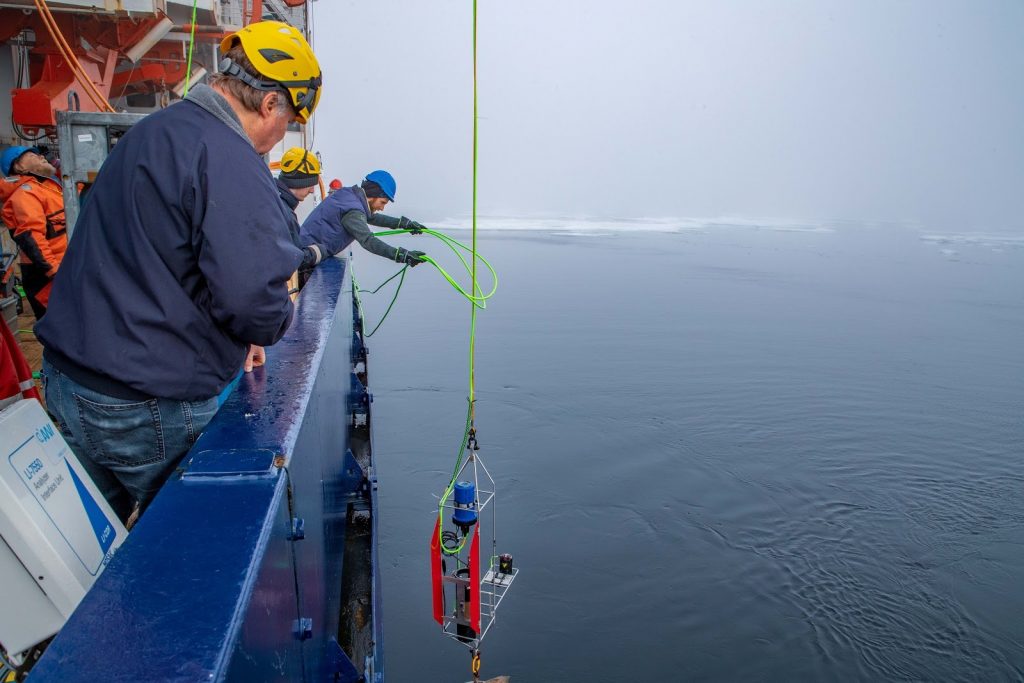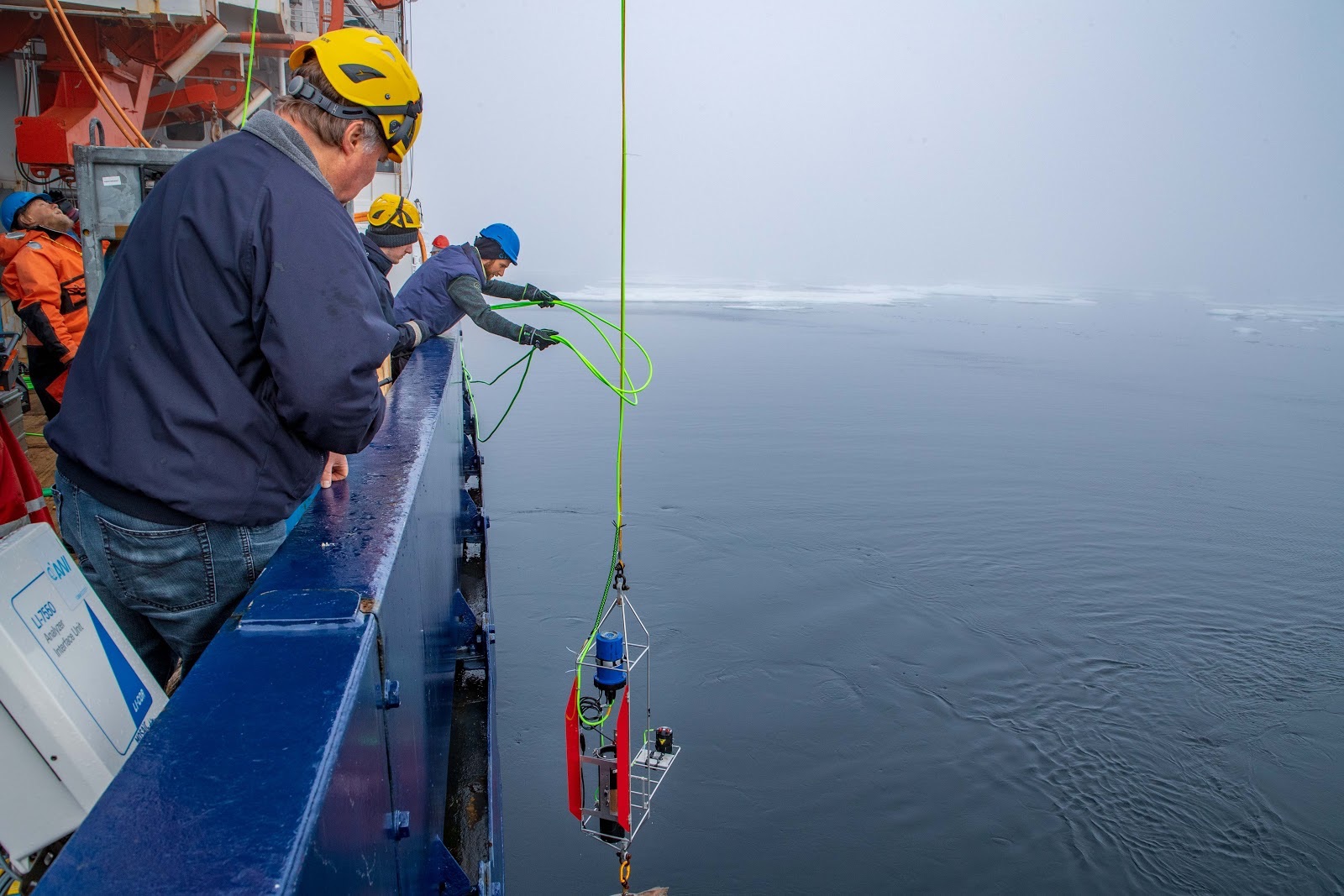by Matthew Shupe, CIRES/NOAA scientist and co-coordinator of MOSAiC
We have a new mission now that we’ve sailed off on Tryoshnikov. Picking up the distributed network. For MOSAiC we made this fantastic network of buoys, a constellation of observations stretching for 10s of km in all directions from Polarstern. The whole constellation had drifted across the Central Arctic during this past year in roughly the same relative orientation. Only in the past weeks has the formation started to change rapidly. Some nodes have drifted faster than others, spreading out. And many of the nodes have been approaching the ice edge. A lot of these measurement systems float, but some do not. And some also have data stored locally that is not transmitted via satellite communications. Lastly, these stations often contain plastics, batteries, and other materials we would like to keep from polluting the Arctic. There are many reasons to go out and recover the various assets that we’ve placed out on the ice. And so this is now our mission with Tryoshnikov; to finish what we’ve started in the past days with Polarstern. In the two days since the ships parted we’ve been very successful. Now that we get higher frequency updates on the positions of the different stations, as well as better visibility in general, it has been easy to find the installations. It is kind of a fun “where’s Waldo” game to be searching the icy expanse for little buoys…. Some of them white balls! White makes sense as far as minimizing melt around the buoys…. But it sure does make the search hard! Once spotted, we bring the ship alongside the remaining ice floe. So far the floes have still been more than 100m across, with some modestly stable ice. At least there is enough ice to serve as a place to set down our recovery team with the Tryoshnikov’s huge cranes, which allow us to keep the ship at a healthy distance and minimize the breakage to the floes. For the recoveries at both the M6 and M4 sites that team worked quickly and effectively. Extracting our assets, leaving behind no trace except a few holes in an ice floe that will likely be entirely gone within a couple of days. We will see how things progress in the coming days, but so far we’ve had great success.


